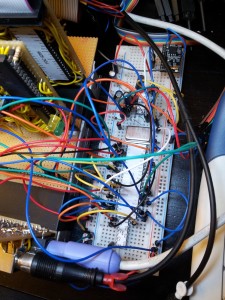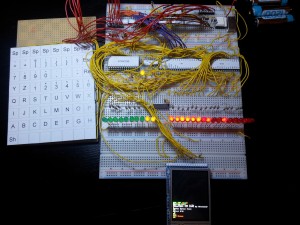Some time has passed since my last update on my Z80 computer and a lot of things have changed. First, I summarize some specs from the past posts and will not go deeply into details here. You can find more details here: Z80 Single Board Computer, Z80 work in progress.
- MCU: Z80 (Z8400B) at 7.3728 MHz, NMOS version for no real reason, CMOS would also be ok
- RAM: 628128 SRAM (128k available with bank switching, see text)
- ROM: AT28C64 EEPROM, AT28C256 possible (see text)
- Internal display: 320×240 TFT with ILI9325 controller
- External video (b/w), 80×25 characters
- PS/2 Keyboard
- 1.44 MB floppy disk, compatible with normal PCs
- CP/M 2.2





